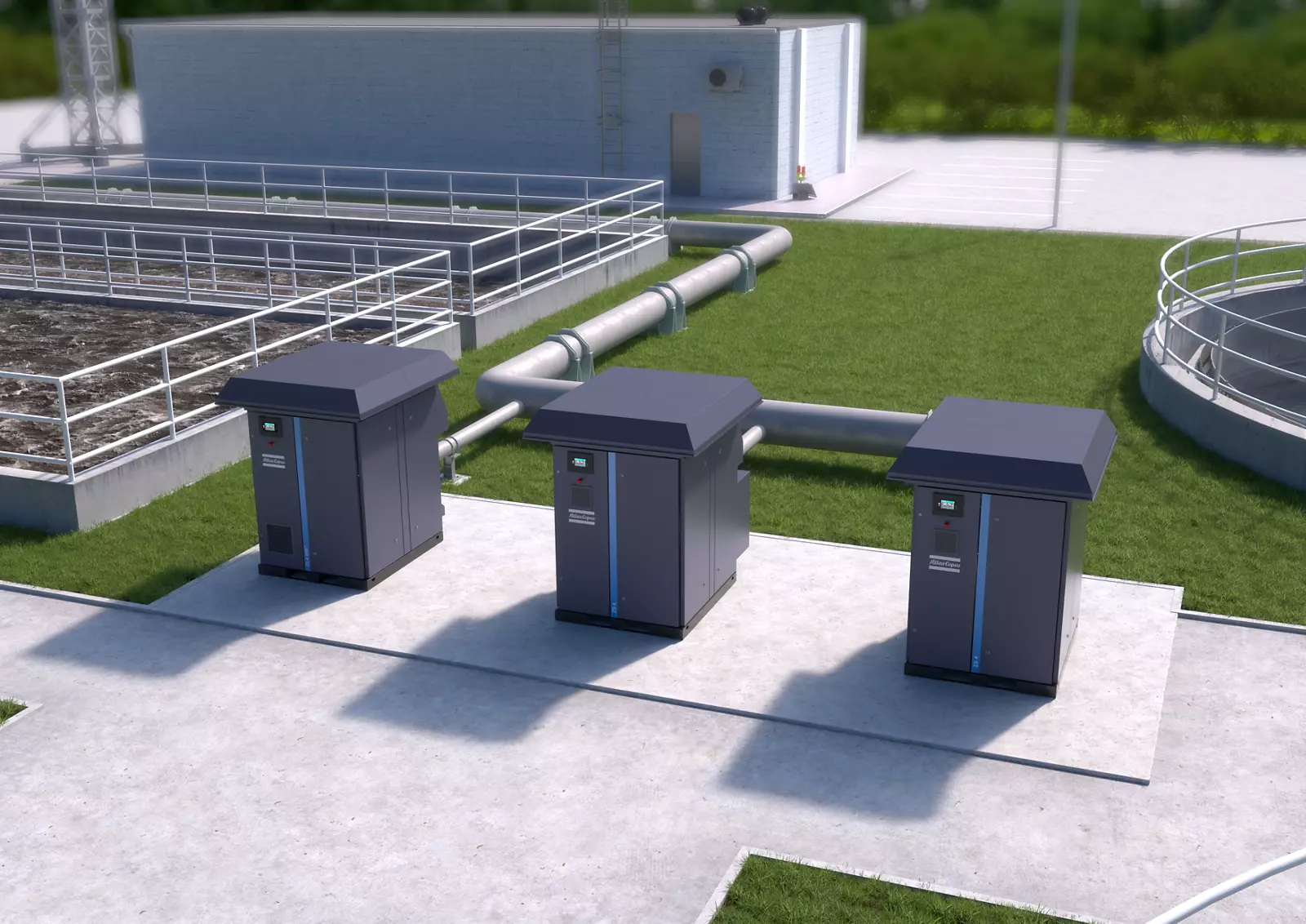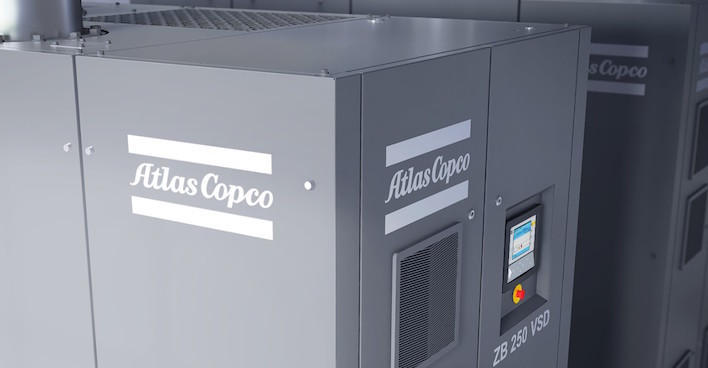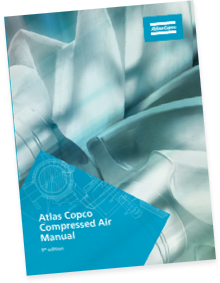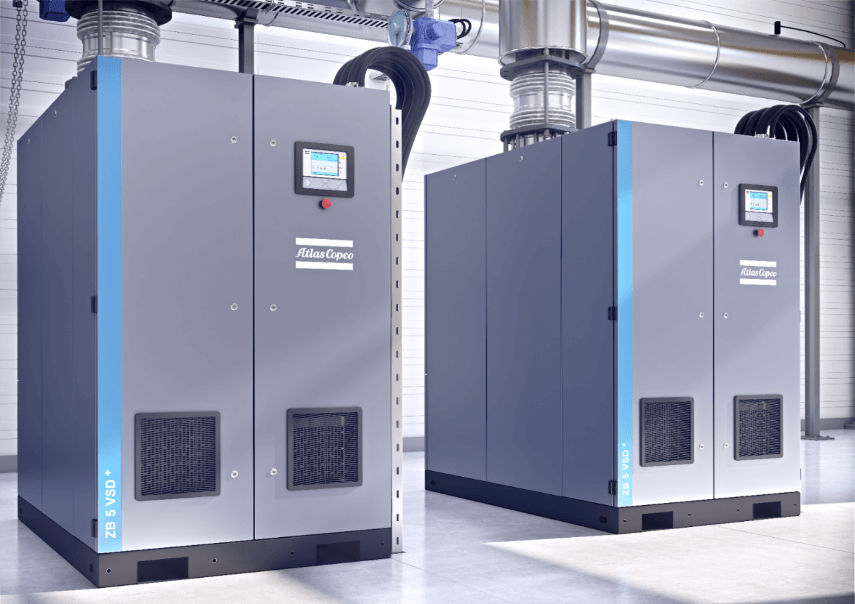Ask Atlas Copco is a segment that discusses commonly asked questions about various compressor, vacuum, and blower technologies, processes and best practices. Today’s answer comes from Paul Petersen, regional manager for blowers and low-pressure compressors.
Last week, we began debunking the common myth that high-speed turbo blowers (HSTB) are unreliable. HSTBs are inherently reliable machines, but blower design, environmental conditions of the plant and operating conditions can impact performance. Today, we’ll look at environmental and operating conditions that can affect blower reliability.
Environmental Conditions
Three main factors in a blower environment influence reliability: power quality, atmospheric quality and piping and ventilation systems.
The first factor is power quality. Poor power quality can lead to nuisance shutdowns or shorten the life of motors and drives. Issues can be caused by supply voltage that is out of tolerance or by harmonic interference from nearby equipment. If the power supply to the blower is poor quality, then the HSTB will deliver poor reliability.
The second component impacting reliability is atmospheric quality. Contaminants in the atmosphere can be in the corm of corrosive gas or harmful particulates. Digester gas in the atmosphere can result in hydrogen sulfide contamination of the blower, corroding mechanical and electrical components over time. If foreign particles (metal, salt, etc.) are sucked into the blower, then electronic components and air foil bearing can fail catastrophically. For an HSTB installation to remain reliable, the surrounding environment must be free of contaminants.
The final environmental condition to be aware of is incorrect piping and ventilation. Without proper ventilation, process air can create excessive heat or pressure resulting in reduced performance or premature failure. Piping with excessive elbows and reduced cross-sectional areas or poorly maintained check valves, isolation valves and diffuser membranes can lead to excessive pressure causing blowers to surge. Surge can result in reliability issues, increased maintenance or premature failure.
Operational Conditions
In general, HSTBs are best suited for secondary treatment aeration applications. Making sure an HSTB is being used for its appropriate application is key to maintaining proper blower function. The table below lists each wastewater application, its general air requirements and the recommended blower technologies for that process.
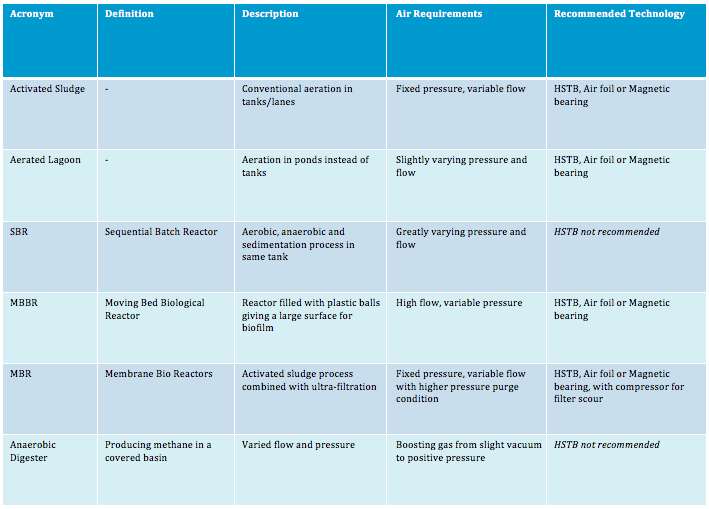
High-speed turbo blower reliability is entirely dependent on blower package design, environmental conditions and operational conditions. For the best possible HSTB system, be sure that the blower package utilizes the correct bearings, cooling system and safety valve for your applications, and insure that the installation has a high-quality power supply, is free from airborne contaminants and has an efficient piping and ventilation system.
If you’d like to talk with an expert about your blower or would like to find out what kind of system is best for your application, reach out to our experts today.
Do you have a question for Ask Atlas Copco? Leave it in the comments below, and your question could be featured!

